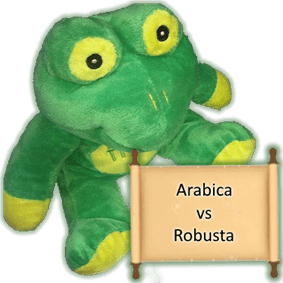Coffee is Graded before it is milled, then it is is selected by size and then by quality:
Grading
Coffee beans are sorted according to a visual, aromatic or taste characteristics. The visual tests determine: screen size, defects. Grading is performed after the processing of the cherry. Once the processing is complete (to the producers standard) the coffee is then removed from parchment (for wet coffees) or the husks are removed (for other coffees). The loss during that process, and the number of defects determines the next part of the grade.
In most countries the coffee is picked and then the first step of the process identifies the high quality and the low quality beans. Typically, this is normally done using some method of floating the coffee cherry.
The table is directly from the SCAA grading.
| Grade | Description |
|---|---|
| 1 | Specialty Grade Coffee Beans: no primary defects, 0-3 full defects, sorted with a maximum of 5% above and 5% below specified screen size or range of screen size, and exhibiting a distinct attribute in one or more of the following areas: taste, acidity, body, or aroma. Also must be free of cup faults and taints. Zero quakers allowed. Moisture content between 9-13%. Then must be cupped by at least 3 Q-graders, who need to all score it above 80. If it does not score above 80, then it become Premium. |
| 2 | Premium Grade Coffee Beans: Same as Grade 1 except maximum of 3 quakers. 0-8 full defects. |
| 3 | Exchange Grade Coffee Beans: 50% above screen 15 and less than 5% below screen 15. Max of 5 quakers. Must be free from faults. 9-23 full defects. |
| 4 | Standard Grade Coffee Beans: 24-86 full defects. |
| 5 | Off Grade Coffee Beans: More than 86 full defects. |
Just a note:
Grading in Ethiopia is does not stick to the above, they grade the wet processed coffees as grade 1 and 2, and the naturals as grade 3 and 4. Grade 1 coffees from Ethiopia are rare and normally are the only grade that is traceable.
Other countries have their own funnies too.
Sizing
The size a bean is determined by its physical size. The largest size of a crop is is named differently each each country. In Kenya the largest coffee is an “AAA”, other countries it is a “AA”. When the beans are extracted from the pulp they are graded according to their size. This is normally done at the mill (using screens), but can be done at the pre-assessment stage too.
As mentioned the Sizing “name” is particular to where the coffee comes from, and is destined for. Below is is a summary, on the left with other names for reference:
| screen size (mm) | Classification | Size Grade | Other names for Size Grade |
|---|---|---|---|
| > 8 | Extra Large | Screen 17+ | AAA, Supreme, Premier, Fancy |
| 7 > 8 | Very Large | Screen 15+ | AA,Superior,Supremo, 1st Flats, Plantation A |
| 6.5 >= 7 | Large | Screen 13/14+ | A, AB, Excelso, Bold bean,Segundas |
| 6 >= 6.5 | Medium | Screen 12/13+ | AB,B,Primera, 2nd flats |
| 5.25 >= 6 | Small | Screen 10/11+ | C,Terceras, small bean, 3rd flats |
| 4.5 >= 5.25 | Shells | *PB | Caracol, Perl, 1st Peaberries |
| 4.5 >= 5.25 | Caracoli, Perl, 2nd Peaberries | ||
| 3.5 >= 4.5 | Caracolillo, Perl, 3rd Peaberries | ||
| Other | Other | TT | used for instant / ground. |
Other Classifications
Hard Bean (SHB) or Highland Grown (SHB)
In theory the higher the bean is grown the less oxygen it is exposed to. This means that the fruit (and hence the seed) takes longer to mature. The result is normally higher sugars and also a harder denser bean. This is sometimes classified as SHB or SHG. Though the definition of hard and highland is specific to a country.
Depending on the height above sea level a bean is grown it is classified as below (m = metres):
- Strictly Hard Bean: above 1,600 m
- Hard Bean: 1,350 to 1,600m
- Semi Hard Bean: 1,200 to 1,350m
- Extra Prime Washed: 1,000 to 1,200m
- Prime Washed: above 600m below 1,000
European Preparation (EP)
Sometimes you will see this on a coffee too. It normally means that at the mill they have and optical sorter, as well as the gravity and hand sorting.
Further reading
- The ICO document on sizing and grading goes in to country specifics here…
- All About Coffee…
- Coffee shrub glossary…



